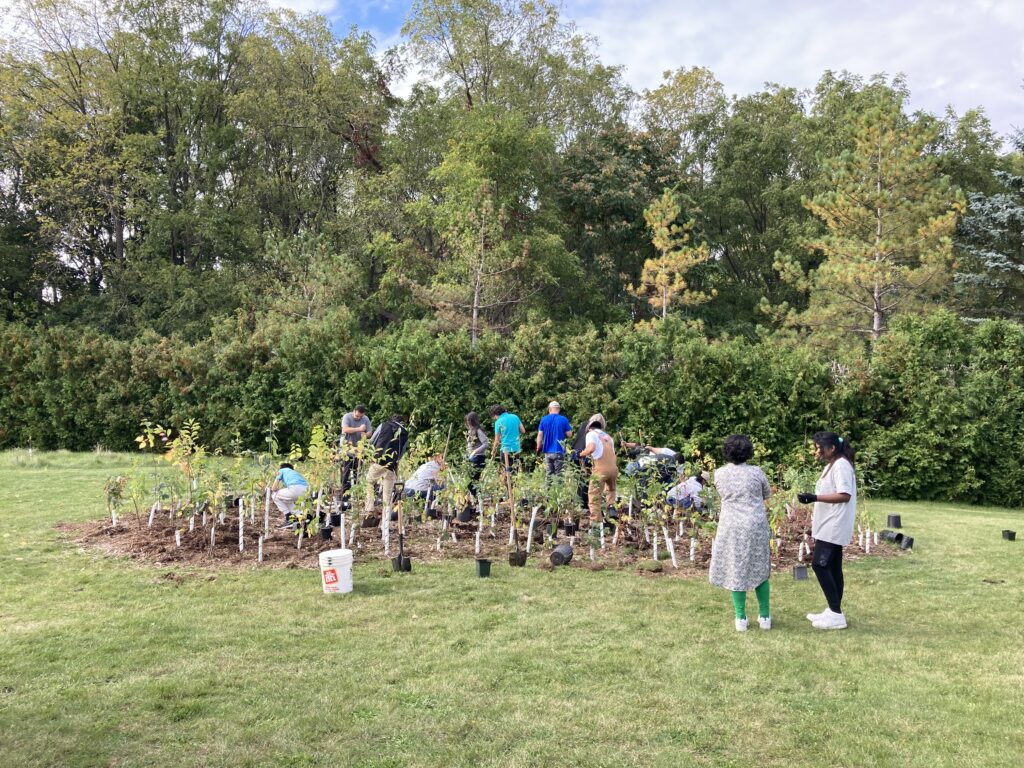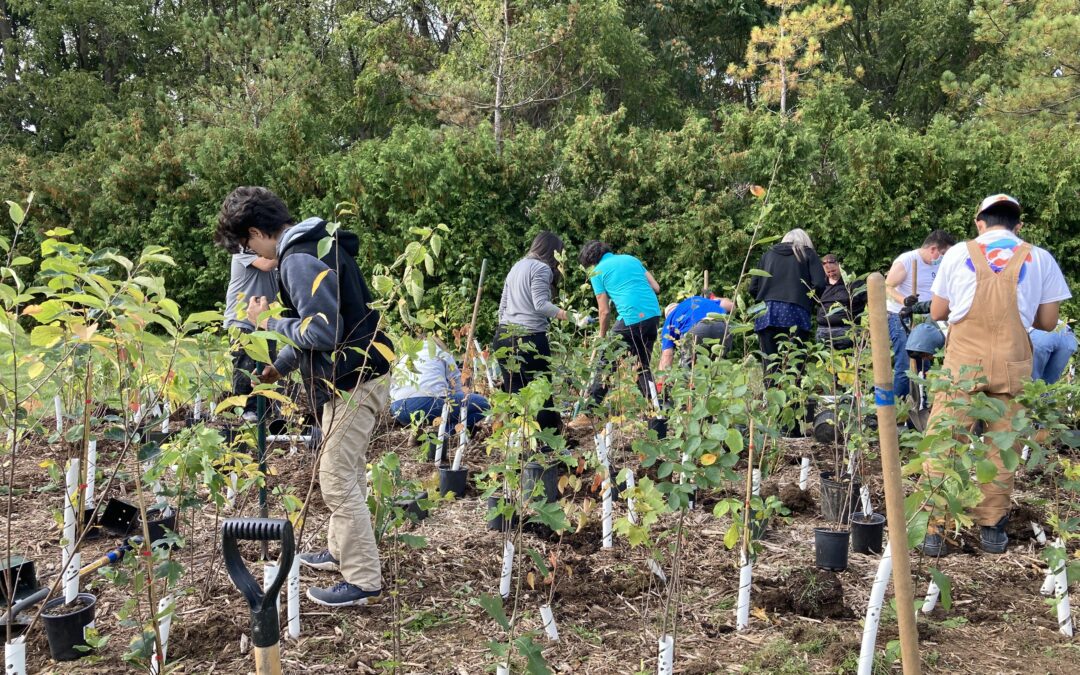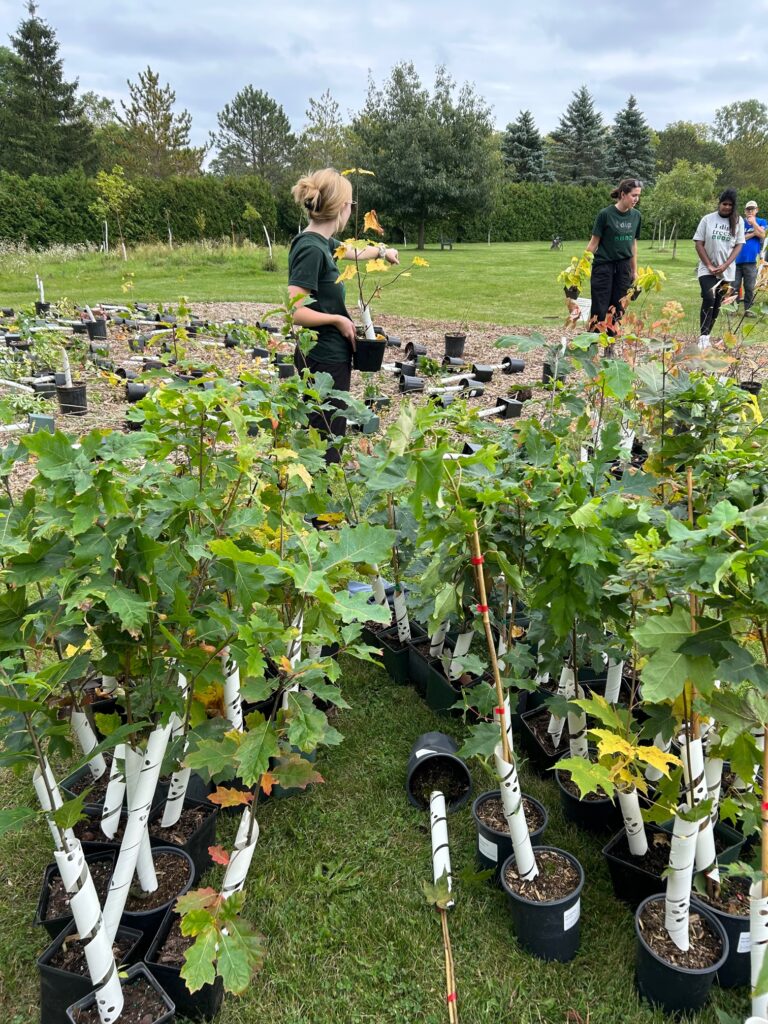ReForest London and 15 dedicated volunteers enriched the landscape by planting a Mini Forest at Sisters of the Precious Blood Monastery in London, Ontario.
The Project
Situated behind Brescia University College in a calm neighborhood, the Sisters of the Precious Blood Monastery offers striking scenery, with mature trees along its perimeter and a vast open meadow behind it. The Sisters of the Precious Blood have been a cornerstone of the community since 1913, moving to their current location in the 1970s. ReForest London has a history of collaborating with them, having worked together previously to increase the canopy cover on their land. This new Mini Forest project continues their partnership to create more wildlife habitats on the monastery’s property. In preparation for the mini forest, the planting crew prepped the site 1.5 months before planting using a lasagna style where amendments were layered onto each other. First, cardboard was laid over the designated area – this is harder than it sounds, as scouting and collecting cardboard to cover 100 square metres was underestimated. Next, a layer of compost was spread generously on top of the cardboard, followed by a layer of mulch. This method served a dual purpose—it smothered existing vegetation and enriched the soil with additional nutrients. Furthermore, the cardboard softened the ground, facilitating easier digging for the volunteers. In 2 quick hours on the planting day, volunteers from Greentech Painting, community members, and staff had 300 trees and plants in the ground, composed of a variety of native plants and tree species, including Basswood, Common Elderberry, Sugar Maple, and Spicebush.

Lessons Learned
The crew began site preparation in July, during an exceptionally hot and dry period. These tough conditions extended the prep work, requiring multiple visits to complete the task. Due to the hot, dry weather, the soil remained quite hard on planting day. Ideally, the site preparation would have occurred in the cooler, wetter spring months, allowing the soil more time to absorb nutrients. However, the planting site wasn’t secured until early summer, preventing an earlier start.
Final Thoughts
“The planning and delivery of this project made us realize that mini forests are easier than we had expected and that if we can secure land, this is something we could consider doing more regularly. We are optimistic that there will be more opportunities to plant mini forests throughout the city of London and engage more community members to help grow London’s Urban Forest.” -Calie Schaefer – Stewardship and Grants Coordinator, ReForest London
This project was supported by Green Communities Canada’s Living Cities Canada Fund. The Network of Nature website provides resources to help you find plants that are adapted to grow in your region or plant nurseries that sell native plants.


This is my old alma mater. I attended Brescia College years ago. Its awesome that some of the expansive lawns are being turned into a mini forest
I’m heading a mini forest project in Oak Bay, BC. I’d like to learn more about the lasagne process that was mentioned. As well hard dry ground was notd, was there any thought to irrigating the site prior to planting?